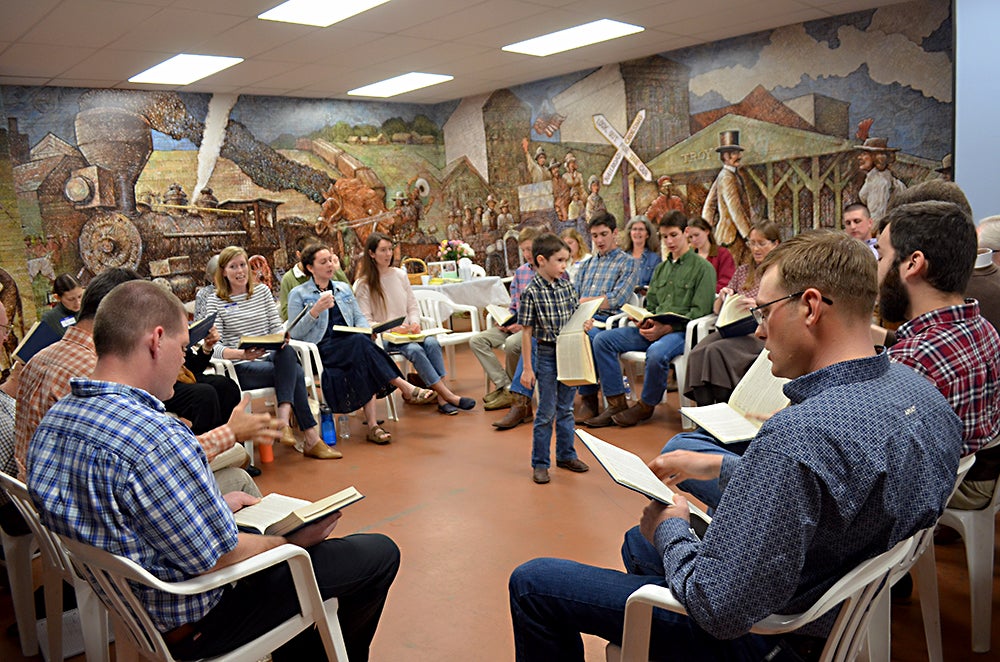Sacred Harp or Shape Note Singing: The tradition continues
Published 7:56 pm Tuesday, February 27, 2024

- Jaine Treadwell | The Messenger Shape Note Singing, or Sacred Harp, remains popular in the South. The Pioneer Museum of Alabama hosts an annual singing each year in February. A large crowd turned out for this year’s event.
|
Getting your Trinity Audio player ready...
|
The Pioneer Museum of Alabama was host to the annual Sacred Harp/Shape Note Singing on Saturday.
Shape notes were introduced in 18th-Century England but became popular in the United States, first, in New England, and later in the South.
Barbara Tatom, museum director, said the Pioneer Museum of Alabama is excited to host the annual acapella singing because it is part of Alabama’s heritage.
“Sacred Harp or shape note singing continues to be popular in the South and it is also being sung in areas around the country,” Tatom said. “There were many familiar faces here for the singing on Saturday and also new faces and singers of all ages.”
Even the youngest singers stepped into the hollow square to lead one of their favorite songs.
“Sacred Harp singing has such a rich tradition and it offers much in the way of music and history,” said Alice Sundberg, who along with her husband, the late Ken Sundberg, has been a leader in the continuation of Sacred Harp Singing in Pike County and throughout the state.
Seeing young people taking part in Sacred Harp Singings is encouragement that the tradition will continue.”
And, the interest in Sacred Harp Singing is not just in the rather rural areas of the South. That was evident on Saturday at the Pioneer Museum of Alabama.
Among the singers were several singers from North Alabama, a young couple from the St. Louis area and one young man from Texas, Sundberg said.
For Ken Sundberg, his initial interest in music was more classical. However, the couple first shared their interest in and appreciation for shape note singing at Western Carolina University.
Although not everyone enjoys shape note singing, those who listen with their hearts find an appreciation for the way of singing that continues to attract people of all ages even after all this time, from 18th-Century England until the year 2024… and moving forward.





